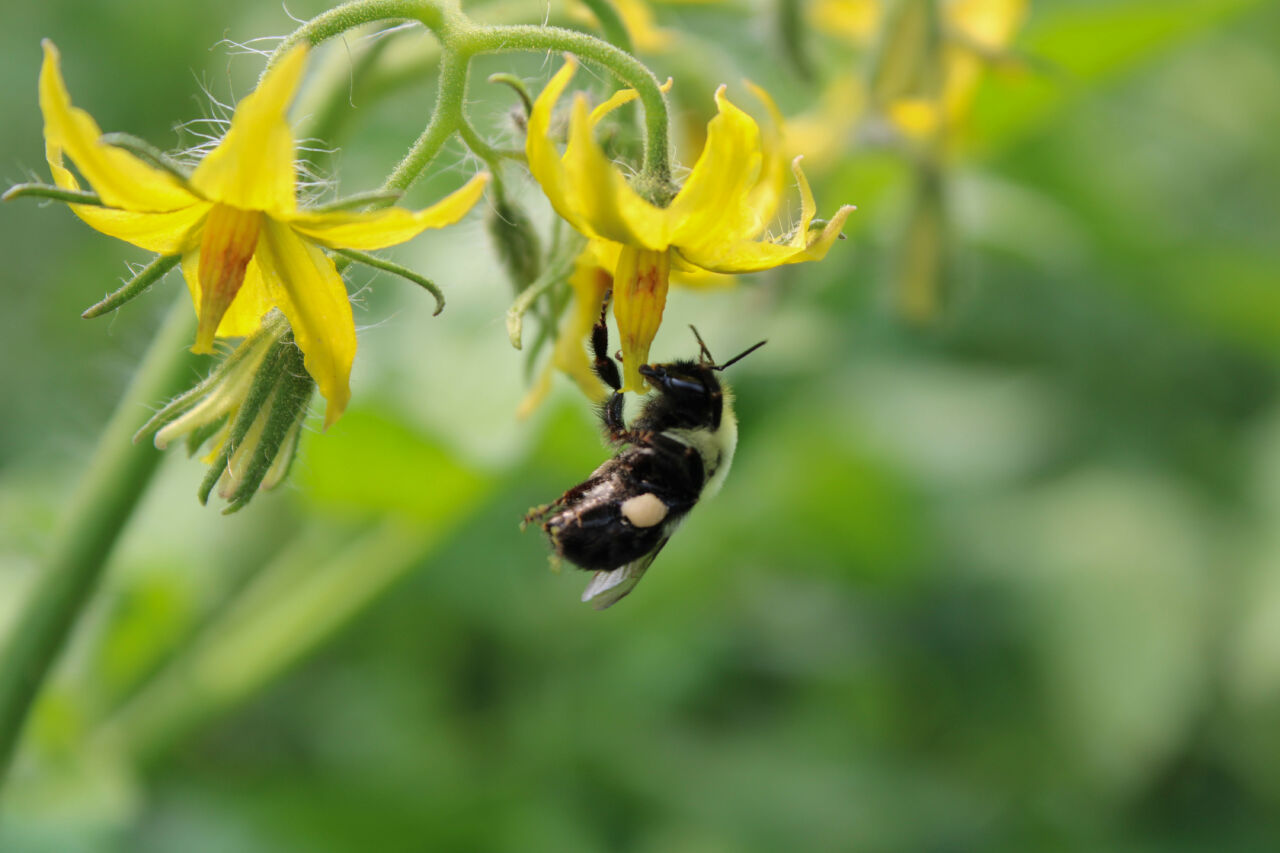Buzz-pollination – Or why we need bumblebees in greenhouses
Imagine that, in order to get your food, you must vibrate the male reproductive organ of some other organism with a specific frequency, and use your chest to do so. Unthinkable?

Tomato flowers need special treatment by the bumblebee to release their pollen. Image: Adobe Stock
As quirky as it may sound, this is everyday life for some genera of bees and flies, which have the remarkable ability to produce vibrations by contracting their thoracic muscles to extract high amounts of pollen from the special anthers found in buzz-pollinated flowers.
Buzz-pollination (or pollination by sonication, as it is often called) is a habit in approximately 6% of flowering plants globally, including some of the most important crops: tomatoes, potatoes, blueberries, bell-peppers, cranberries, and eggplants. The anthers in these flowers never open up to offer their pollen. Pollination by wind or insects that do not buzz-pollinate is possible but very inefficient. Therefore, these flowers rely on buzz-pollinators who must vibrate them in order to release pollen from one tiny hole. For this, bees use the muscles in their thorax which are also responsible for moving the wings.
All bees can buzz, but not all bees can buzz-pollinate. It is estimated that 58% of the bee species worldwide can buzz-pollinate effectively, a trait which has evolved independently in different genera: bumblebees (Bombus), carpenter bees (Xylocopa), digger bees (Amegilla), sweat bees (Halictus), as well as drone flies (Eristalis), are some well-known insect-pollinators that can harvest in bulk the precious pollen of these secretive anthers. However, a notorious exception is the honeybee, and bee-scientists believe that this is probably because its muscles cannot achieve the right acceleration to make the anthers “explode”.
To view this content, you must accept marketing and third-party cookies.
Why all this? It has been suggested that buzz-pollinated flowers have evolved exactly to restrict access to pollen, and thus avoid less-efficient pollinators or, worse, pollen thieves (i.e., animals that collect the pollen without providing any pollination service to the plant). All in all, this strategy has generally proven successful, and is a major reason why bumblebees have been widely commercialized to provide their indispensable pollination services in greenhouses around the world
So the next time you enjoy a juicy, ripe tomato, remember that this has been achieved with the contribution of a zealous (and irreplaceable) bumblebee worker.
To view this content, you must accept marketing and third-party cookies.
Did you know?
You can reproduce the right vibrations to make the tomato flowers squirt their pollen by using a regular A tuning fork (440 Hz) like those used to tune musical instruments. Just strike it and let it touch the anther tips.
